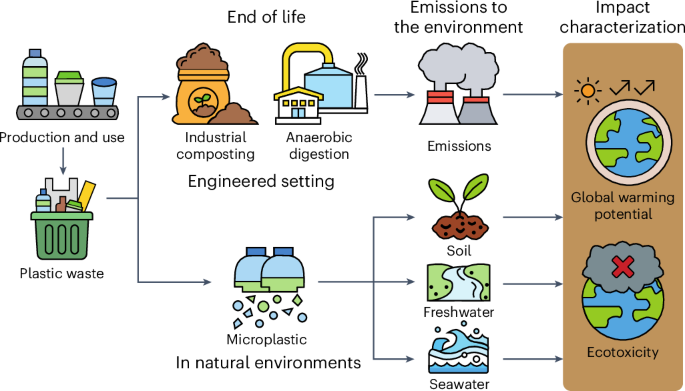
We often hear about the importance of reducing waste and choosing eco-friendly options. But what happens when we dispose of something labeled “biodegradable”? Does it truly disappear without a trace? While biodegradable materials are designed to break down naturally, littering them can still have significant consequences for our environment. This article will delve into the complexities of biodegradable trash, exploring its impact on ecosystems and outlining responsible disposal practices.
This article will first define biodegradable materials and their properties. Then, we’ll examine the environmental impact of littering biodegradable items, focusing on how they disrupt natural processes and harm wildlife. We’ll also discuss the decomposition process itself, highlighting the time it takes for different materials to break down. Finally, we’ll explore composting and recycling as effective alternatives to littering, emphasizing the importance of responsible waste disposal for a healthier planet.
Biodegradable Materials
Biodegradable materials are substances derived from natural sources that can be broken down by microorganisms like bacteria and fungi. These materials decompose into simpler compounds, such as water, carbon dioxide, and biomass, leaving minimal residue behind. Common examples include food scraps, paper products, cotton, and certain types of plastics.
The biodegradability of a material depends on several factors, including its chemical composition, the environmental conditions (temperature, moisture, oxygen availability), and the presence of microorganisms. Some materials decompose quickly, while others can take months or even years to break down completely.
It’s important to note that not all “biodegradable” products are created equal. Some may require specific composting conditions or a long time to decompose fully. Always check product labels for detailed information about biodegradability and disposal instructions.
Environmental Impact of Littering
While biodegradable materials eventually decompose, littering them can still have detrimental effects on the environment. When trash is discarded improperly, it often ends up in landfills, waterways, or natural habitats. This disrupts ecosystems by introducing foreign substances and altering natural processes.
Wildlife Impacts
Litter poses a significant threat to wildlife. Animals may ingest biodegradable materials, mistaking them for food, leading to digestive problems, starvation, or even death. Entanglement in litter can also cause injuries or restrict movement, making it difficult for animals to hunt, escape predators, or care for their young.
Habitat Disruption
Littering degrades natural habitats by altering soil composition, water quality, and plant growth. Biodegradable materials can smother vegetation, block sunlight, and introduce harmful chemicals into the environment. This disruption can lead to a decline in biodiversity and threaten the survival of native species.
Decomposition Process
The decomposition process involves a complex interplay of microorganisms, enzymes, and environmental factors. When biodegradable materials are introduced into the soil or compost pile, microorganisms begin to break them down into simpler compounds.
Factors Affecting Decomposition
Several factors influence the rate of decomposition, including temperature, moisture, oxygen availability, and the type of material being decomposed. Warm temperatures and adequate moisture generally accelerate decomposition, while cold temperatures and dryness can slow it down. Oxygen is essential for aerobic decomposition, which involves microorganisms that require oxygen to survive.
Timeframe for Decomposition
The time it takes for biodegradable materials to decompose varies widely depending on the factors mentioned above. Some materials, such as food scraps and paper products, can decompose within weeks or months. Others, like certain types of plastics or wood, may take years to break down completely.
Composting and Recycling
Composting and recycling are effective alternatives to littering biodegradable materials. These practices divert waste from landfills, reduce greenhouse gas emissions, and create valuable resources.
Composting
Composting involves decomposing organic materials like food scraps, yard waste, and paper products in a controlled environment. This process creates nutrient-rich compost that can be used as fertilizer for gardens and lawns.
Recycling
Recycling involves collecting and processing used materials to create new products. While not all biodegradable materials are recyclable, some, such as paper and certain types of plastics, can be recycled multiple times.
Responsible Waste Disposal
Ultimately, responsible waste disposal is crucial for minimizing the environmental impact of biodegradable materials. This includes:
- Choosing reusable items whenever possible.
- Composting food scraps and yard waste.
- Recycling appropriate materials.
- Properly disposing of non-biodegradable waste in designated bins.
- Educating others about responsible waste management practices.
Conclusion
While biodegradable materials offer a more sustainable alternative to traditional plastics, littering them can still have detrimental consequences for the environment. Understanding the decomposition process and adopting responsible disposal practices, such as composting and recycling, are essential for mitigating these impacts. By making conscious choices about our waste, we can contribute to a healthier planet for future generations.
